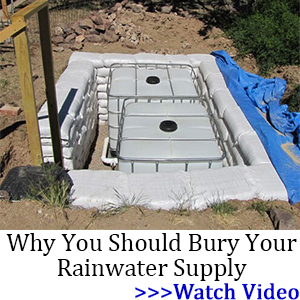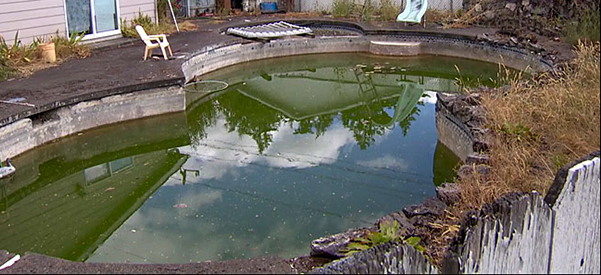When things go wrong, the first item your average Joe citizen is going to stock up on is water.
It’s easy for Joe American to buy a five-gallon jug of water and assume the proverbial storm will pass within a day or two.
But we know all too well the very real danger of complacency and, more, we know how easy it is for the water supply to become contaminated. Whether by act of God, foreign bodies, domestic terror or otherwise, the water supply is an easy target.
Worse still, there are those unfortunate individuals who buy into the insidious rumors circulating around about what it means to purify your own water.
If there’s one thing worse than complacency, it’s the propagation of dangerous misinformation.
Here are eight of those dangerous urban survival myths that you would be wise to unlearn.
Myth 1: Boiled Water Is Boiled Water
 One of the first things most everyone knows to do when he needs water is to boil it. After all, he reasons, boiling water will fully eradicate most, if not all, dangerous germs and microbes lurking just below that crystal-clear surface.
One of the first things most everyone knows to do when he needs water is to boil it. After all, he reasons, boiling water will fully eradicate most, if not all, dangerous germs and microbes lurking just below that crystal-clear surface.
Not only is this categorically wrong, it could cost you and your loved ones everything.
While it’s true that boiling water is a simple and effective way to cleanse your water, it’s important to understand that the hotter the water gets the cleaner it will be. It’s all too easy to get that pot steaming and assume that the water is ready to consume.
The most important thing to remember when boiling water is that it is less about the duration of boiling and more about temperature.
Water fully boils at 212 degrees Fahrenheit, which is hot enough to instantly cleanse your water of just about any common microorganisms. If bringing your water to a full boil is out of the question for whatever reason and you have a thermometer handy, you can alternatively heat it to 160 degrees for 30 minutes or 185 for three minutes.
Myth 2: All Boiled Water Is Not Always Created Equal
Another dangerous myth about water purification is that boiling is a cure all. Something you need to consider is how dirty the water actually is. While boiling will effectively cleanse standing water or rain water, it won’t do you any good to boil chemically contaminated water.
Simply put, you aren’t going to boil that pesky depleted uranium residue out of your water.
The same principal applies to dirty water.
If the water you are attempting to purify is visibly dirty or murky, you should filter the water before attempting to cleanse it. It’s all the better if you are in a situation where there are commercial filters available but, if not, you have options.
One easy way to get the muck out of your water is to filter it through a clean shirt or a towel. If a filter isn’t available, you can additionally just let the water sit until the sediment sinks to the bottom of the container and pour the clean water off of the top.
Myth 3: Eating Clean, White Snow Is Always Safe
So, say the world went to hell while you were up in the mountains surrounded by pristine, fresh snow. There’s a common misconception that fresh snow is ready for you to consume.
As an informed survivor, you know that nothing is that easy.
While it’s true that snow makes for a great source of hydration in those dire, icy scenarios, it’s as important as ever to boil your water.
While it’s always a good idea to purify the water you consume, snow presents a different set of problems for the intrepid survivor other than simple contamination.
Paradoxically, eating snow can actually lead to further dehydration and, given the climate you’ve likely found yourself in, hypothermia.
Even though the snow itself might not necessarily be dirty, the energy your body spends melting the snow while simultaneously dealing with your plummeting internal temperature is simply not worth the risk.
Your best bet is to collect the snow and melt it down as it will warm the water as well as kill any germs it may have picked up off the ground.
Myth 4: You Need To Drink 8 Glasses Of Water Daily
A classic piece of mom-advice is that we all need to drink 8 glasses of water every day. While someone in a life-or-death, survival situation will likely be aware of conservations necessity, it’s important to know that your body can operate just fine on less water.
While it’s massively important for your well-being to stay hydrated, don’t blow your stockpile because you grew up thinking you needed 8 glasses every day. Cutting back on salt, soda, sweets and many other perishable goods while upping your intake of fruits and vegetables is a great way of keeping yourself hydrated.
The other side of this myth is that it implies drinking 8 glasses is purely about intake. On the contrary, one of the most important aspects of hydration is output.
Hydration is as much about flushing toxins out of your system as it is about satiating your body’s need for liquid. Since the objective is to rid your body of toxins, diet, exercise and vitamins are just as important as gulping down your valuable stash of clean water.
Myth 5: Only Standing Water Is Dangerous
Another popular myth is that as long as your water source isn’t stagnant, it’s safe to consume. The ill-informed survivor will look at a stream gurgling through the woods and over rocks and assume that it’s naturally clean.
As with all water consumption, the name of the game is purification.
As is the case with any water, even moving water has a source and you can’t know what’s stewing around in that source. Unless you want to risk a run-in with giardia or any number of other water-born sicknesses, you need to make sure your water is safe first.
Myth 6: Drinking Small Amounts Of Salt Water Is OK
Salt water, even in minute doses will actually speed up the dehydration process.
It’s the idea of reverse osmosis that comes into play.
The salinity of the water you would drink from the sea is much greater than the natural salinity of the water in your cells. So as you drink the salt laden water, the water in your cells will move through your cell wall membrane to try and dilute the recently ingested sea water. This means your cells and body will lose water by drinking a glass of ocean.
However, it can be used to cool you down as long as you don’t swallow any.
Myth 7: All Cacti Are A Source Of Water
While it’s true that there is water in many types of Cacti, its typically not as abundant as most are lead to believe. Plus, the water tends to be acidic and bitter, which can lead to unpleasant side effects such as diarrhea and vomiting (both of which accelerate the dehydrating processes).
Myth 8: You Can Always Count On Urine In A Pinch
Yes and No.
In a very extreme situation you can drink urine once, possibly twice but it’s really not a long term solution. Urine is waste for a reason, and even though it does have some amount of water in it, if you continue to recycle it more than once then it’s going to become more and more toxic.
You’ll quickly realize this is happening when the color of your urine continues to get darker and darker as you get more and more dehydrated.
In the end, drinking urine follows the laws of diminishing returns. The more you drink the harder your body has to work to process the toxins, making you even more dehydrated, which then negatively accelerates your already limited survival time.
Potential Life Savers: Your Water Survival Tools
Now that we have covered some of the most deadly survival water myths, it’s worth a quick mention about some helpful solutions.
There are two primary survival tools that I keep with me at all times. A portable water filter and a bunch of water purification tablets. While these two tools won’t make sea water drinkable or make urine pure, they will open up a much wider array of water options, when options are limited.
While a portable water filter can’t locate water for you, it will greatly increase your chances of survival. A portable survival water filter protects you from most dehydration enhancing sicknesses caused by drinking bacteria laden water.
So don’t leave home, travel, backpack, bug out or stay home without one.
Source: apartmentprepper.com
About the author:
“Just In Case” Jack
Jack’s an expert survivalist and prepper with an engineering and military background. He’s a dedicated family man and a proud American. Jack wants to help you to be prepared for anything. Trust me, when TSHTF you’ll be happy you met Jack. Sign up now to win a free Life Straw at SkilledSurvival.com
You may also like:
 Ingenious Foods People Made During Famines
Ingenious Foods People Made During Famines
How To Build An Underground Bunker For Only $400 (Video)
These Self-Defense Items Will Vanish First in a Crisis
Turning Flour into Hardtack Biscuits With Over 100 Year Shelf Life















The part on drinking seawater that says “However, it can be used to cool you down as long as you don’t swallow any” is confusing.
How does it cool you down if you don’t swallow it??
The process of evaporation removes heat.
By putting your head in it.